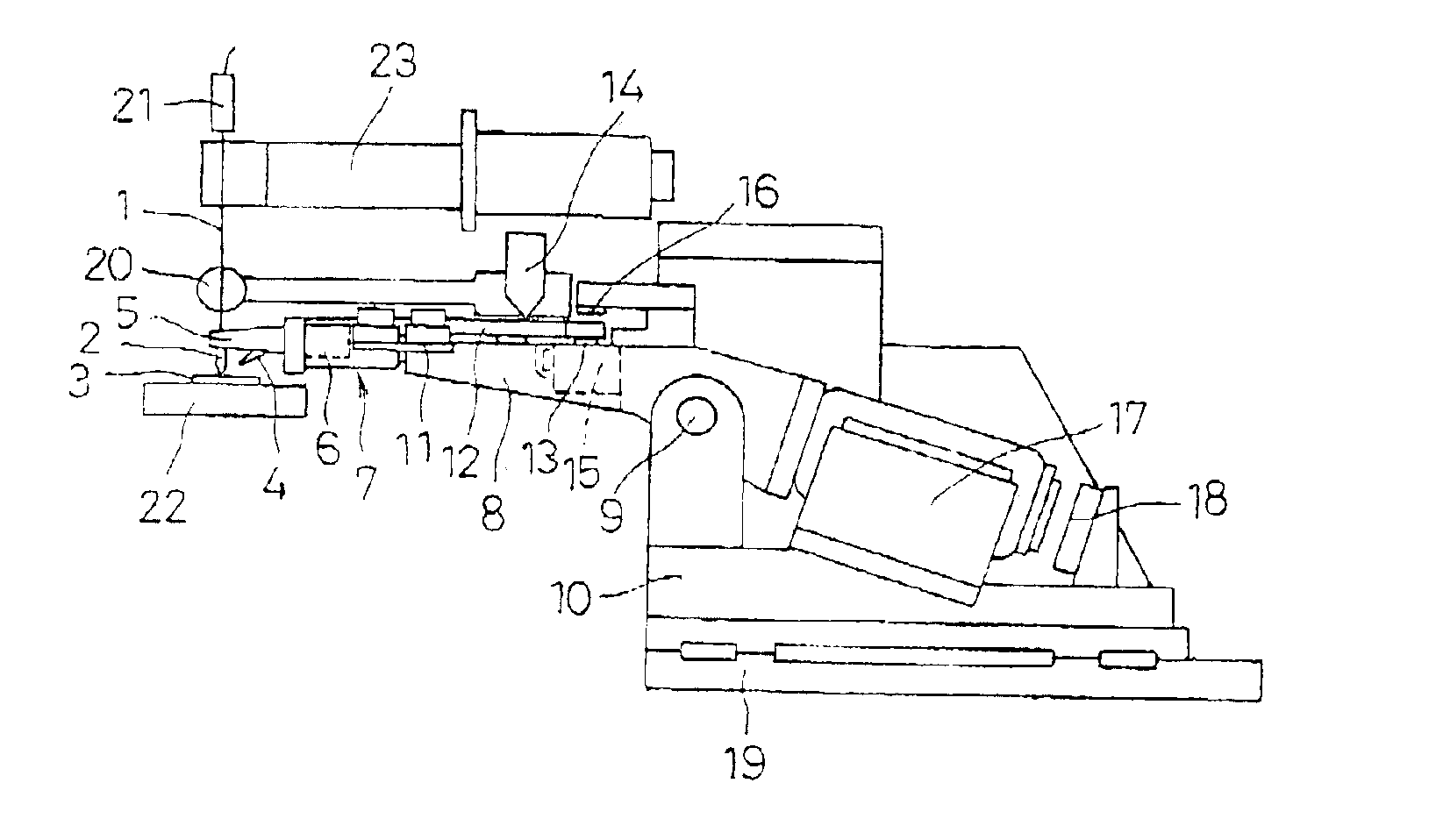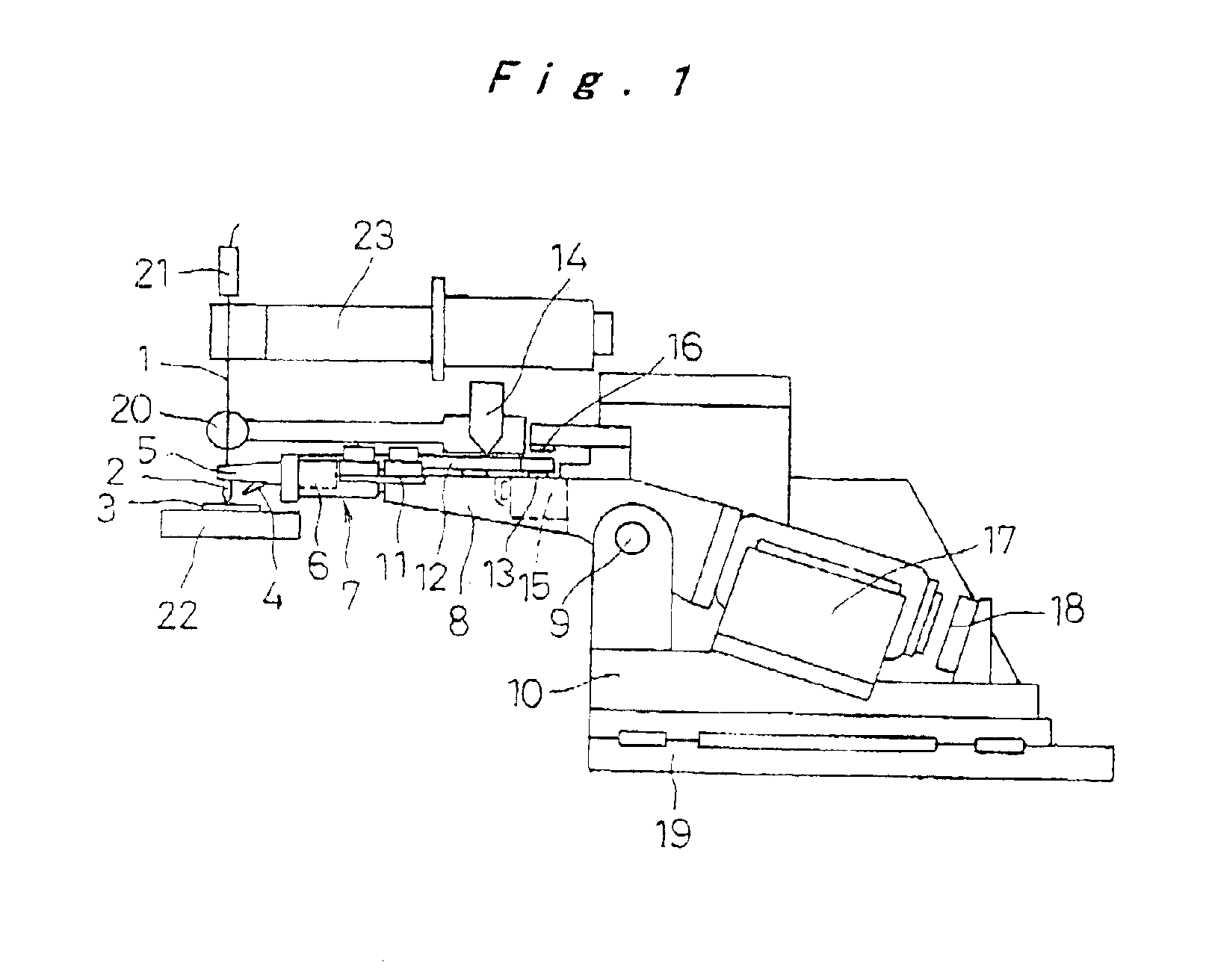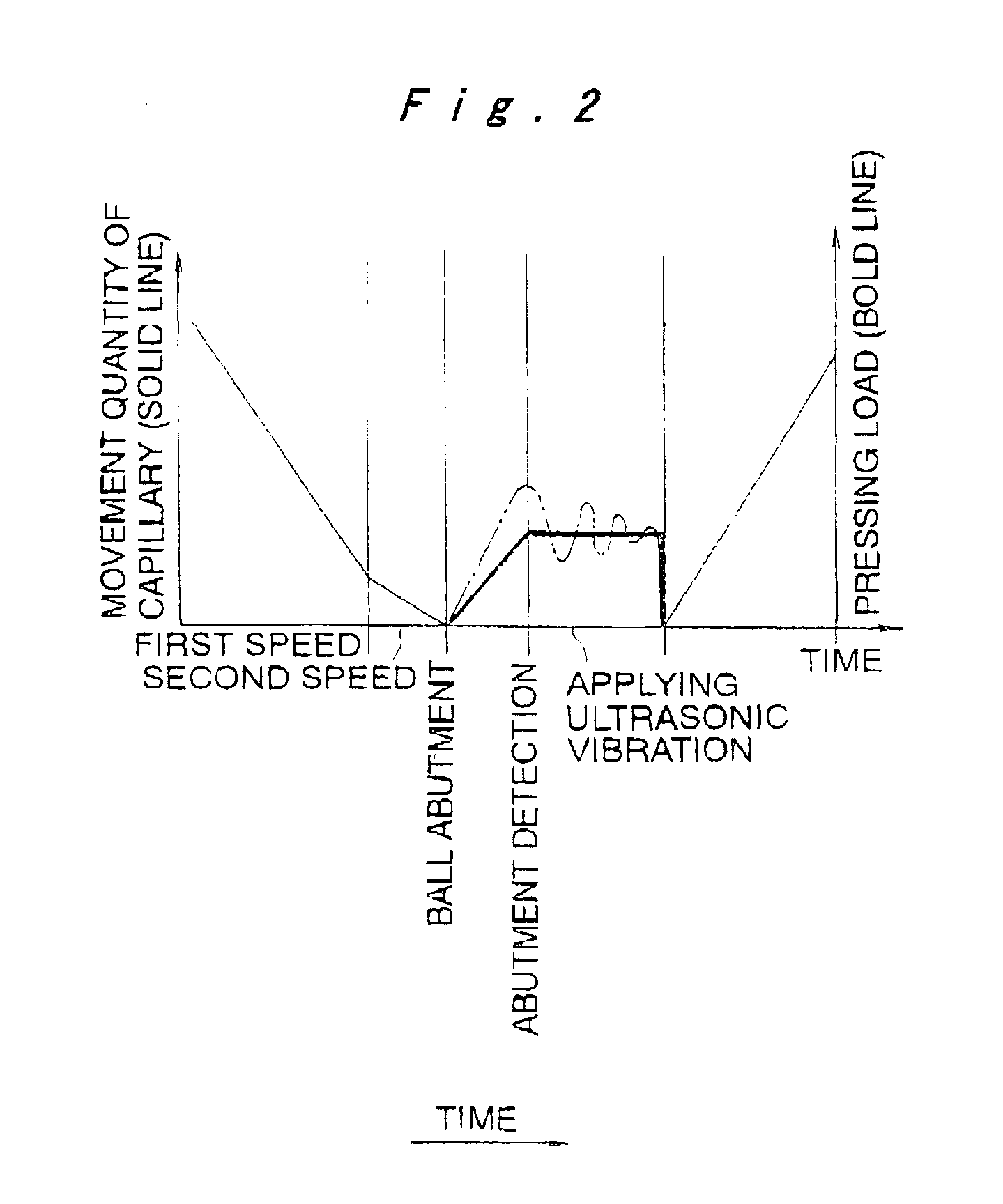Bump bonding method apparatus
a technology of pump and bonding method, applied in the direction of soldering apparatus, manufacturing tools,auxillary welding devices, etc., can solve the problem of difficult to achieve stable operation conditions that can be applied in practical industrial use, and achieve the effect of high reliability
- Summary
- Abstract
- Description
- Claims
- Application Information
AI Technical Summary
Benefits of technology
Problems solved by technology
Method used
Image
Examples
Embodiment Construction
[0032]The following will describe one embodiment of a bump bonding apparatus of the invention with reference to FIG. 1 through FIG. 5.
[0033]Referring to FIG. 1, reference numeral 1 denotes a gold wire from which a ball is made, reference numeral 2 denotes a capillary through which the gold wire 1 penetrates, reference numeral 3 denotes an IC, reference numeral 4 denotes a discharge torch provided in close proximity to the tip of the gold wire 1, reference numeral 5 denotes a ultrasonic horn having the capillary 2 attached at the tip portion thereof, and reference numeral 6 denotes a ultrasonic transducer attached to the base portion of the ultrasonic horn 5. The capillary 2, the ultrasonic horn 5, and the ultrasonic transducer 6 together form an ultrasonic head 7. The ultrasonic transducer 6 is designed to have the resonant frequency of 230 kHz, and the ultrasonic horn 5 is designed to have a horn length as long as one wavelength of the ultrasonic vibration wavelength to reduce both...
PUM
| Property | Measurement | Unit |
|---|---|---|
| frequency | aaaaa | aaaaa |
| frequency | aaaaa | aaaaa |
| frequency | aaaaa | aaaaa |
Abstract
Description
Claims
Application Information
 Login to View More
Login to View More - R&D
- Intellectual Property
- Life Sciences
- Materials
- Tech Scout
- Unparalleled Data Quality
- Higher Quality Content
- 60% Fewer Hallucinations
Browse by: Latest US Patents, China's latest patents, Technical Efficacy Thesaurus, Application Domain, Technology Topic, Popular Technical Reports.
© 2025 PatSnap. All rights reserved.Legal|Privacy policy|Modern Slavery Act Transparency Statement|Sitemap|About US| Contact US: help@patsnap.com



